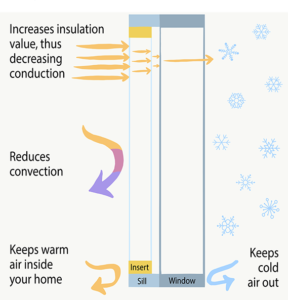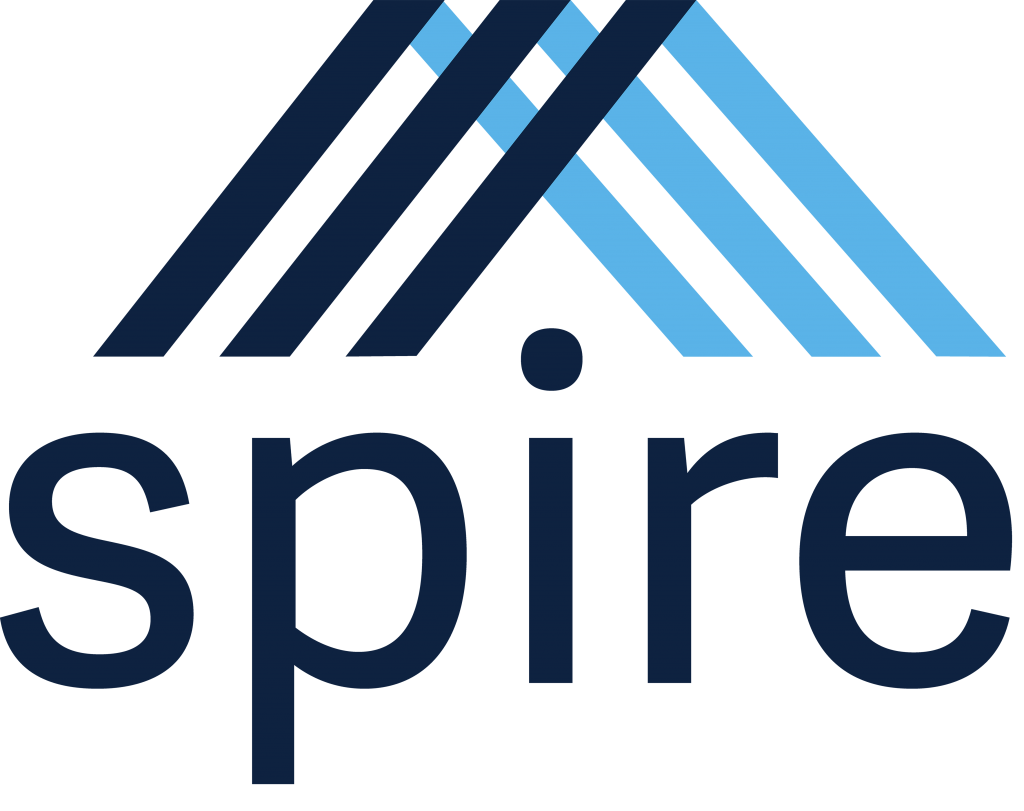Working Together to Reduce Energy Costs, One Insert at a Time
Jessica Rule and Samantha Moore

If you live in Maine, you probably know that the first defense to feeling cold in your home is to put on another layer, maybe some socks or a sweater, rather than to turn up the heat. This is a reality of growing up and living in this beautiful state that just so happens to be “wicked” cold for 6 months of the year. When using a standard furnace or boiler, heating your home with oil can cost over $3,000 annually in Maine, which is among the highest in the nation (Governor’s Energy Office, 2012). Maine also has one of the oldest housing stocks in the country, so drafts and poor insulation contribute to these high heating costs, and colder than preferred indoor temperatures. AmeriCorps members and students, partnering with various organizations throughout the state, have been helping communities tackle these high heating costs by implementing window inserts within their homes. AmeriCorps is a nationwide service organization whose main goal is poverty alleviation. At the University of Maine site, the members are focused on achieving this goal through energy efficiency. WindowDressers, a nonprofit organization located in Rockland, Maine, provides insulated window inserts to help families feel comfortable in their homes as well as save money on their heating bills. The inserts are purposeful and blend into the home, fitting snugly onto the inside of existing windows, helping block drafts without obstructing the view!
Dr. Sharon Klein, an associate professor at the University of Maine’s School of Economics and a board member at WindowDressers, teaches that these inserts, and the builds necessary to create them, represent four areas of sustainability: economic, environmental, social, and technical. Economically, they are cheap to build and buy, and they save the customer money on their heating bills every single year. In general, these inserts pay for themselves in 1-2 heating seasons (WindowDressers, 2018). Environmentally, they save on emissions of excess greenhouse gases due to drafty windows that let warm air out, and cold air in, which causes your furnace to run more often. Socially, they help make communities stronger, build partnerships, and help families feel more comfortable in their homes. Lastly, they are technically efficient, as over the years Window Dressers and volunteers alike have created specialized jigs or tools, and honed in on the most efficient and accurate way to build the inserts and get the job done right.
“…these inserts, and the builds necessary to create them, represent four areas of sustainability: economic, environmental, social, and technical.”

This year, WindowDressers partnered up with AmeriCorps teams from many college campuses across Maine including Saint Joseph’s College, Husson University, University of Southern Maine, Unity College, and the University of Maine. During the January build the University of Maine site helped supply window inserts to 24 low-income families in the greater Bangor area, offering over 200 window inserts for free and over 120 inserts to 17 full price customers. How is this possible? Window Dressers relies on volunteers like AmeriCorps members, college students, and insert recipients to help keep their costs low. In 2017, over 1,000 volunteers worked together to build 6,214 inserts at 27 Community Workshops across Maine. This community aspect is what makes this project so unique. One volunteer/client named Bob, described the build as being “so easy that anybody could do it.” He later spoke about how volunteering at the build made him feel good, and that he wants to help at future builds even though he wouldn’t be receiving inserts himself. Not only do these builds accomplish their goal of making the physical inserts, they also help to build community and relationships. The process begins months in advance with trained volunteers arriving at clients’ homes to do a custom measure of their windows. Since every window is different, even if they look the same, each window must be assessed by the volunteers for its ‘square-ness’, measured twice with a laser, given a window-specific label, and inputted into a specialized computer program to ensure accuracy. WindowDressers and the volunteers want this process to be seamless, and accurate. Once finished, and if cared for properly, these custom inserts can last between 5 and 10 years.
“In 2017, over 1,000 volunteers worked together to build 6,214 inserts at 27 Community Workshops across Maine.”
Since 2010, WindowDressers inserts have been estimated to save approximately 880,000 gallons of heating fuel, which is equal to about $2.2 million (WindowDressers, 2018). Dr. Sharon Klein has made these community workshops a key focus for the sustainable energy courses that she teaches at the University. According to Dr. Klein and her students’ work, it is estimated that these window inserts save $52 per insert per year for single-paned windows, and $18 per insert per year for double-paned windows if the house is heated primarily by fuel oil (based on a typical insert size of 36×60 in.). The inserts work by improving your windows in the three ways that heat is transferred: conduction, convection, and air filtration. To reduce conduction, which is the direct transfer of heat from one surface to the next, the inserts create two sealed air spaces- one between the window and the insert, and the other between the two plastic layers of the insert. The purpose of this additional air space is to create a barrier between the interior of the home and the harsh winter temperatures exterior to the home. Convection is the movement of air, causing hotter air to rise and cooler air to fall due to the different densities. When your home heats up, the warm inside air hits the cold winter windows. When this happens, the air inside the home cools down and falls to the floor, pushing the warmer air up toward the ceiling. The result of this convection is an air current that feels like a draft. The inserts help raise the temperature of the surface that the air touches, in this case the inserts themselves, so that when the inside air encounters it, this draft is reduced.

Window inserts also contribute by helping seal tiny cracks between the windows and their frames that lead to cold air leaks. The inserts are custom measured to fit perfectly snug, with a foam strip around the edges to fill cracks. The precision of the window inserts allows them to be efficient while adapting to already existing windows, a much less expensive option compared to replacing windows. Before getting inserts, one volunteer said that they couldn’t go more than two months without having to refill their oil tank. After spending some time with his new home improvements he said, “The window inserts, I have to tell ya, they work, even for sliding doors! They have been a godsend. I ordered my last fuel fill in December, and I have not refilled my fuel yet.”
Another aspect that makes these inserts so great is their environmental impact. Dr. Klein has calculated that the window inserts save approximately 420 pounds of greenhouse gas emissions per insert per year for single-paned windows, and 140 pounds of greenhouse gas emissions per insert per year for double-paned windows when heating a home with fuel oil. Beyond this, by reducing the drafts and blocking leaks, the heat generated for the home is not wasted. This means that furnaces and boilers have to run less often, and at lower intensity levels. Promoting the efficiency of systems and energy use is one very important way to combat a changing, warming climate.
“Dr. Klein has calculated that the window inserts save approximately 420 pounds of greenhouse gas emissions per insert per year for single-paned windows, and 140 pounds of greenhouse gas emissions per insert per year for double-paned windows when heating a home with fuel oil.”
The purpose of the window insert builds is first and foremost community development, which can come in many forms. By providing community members with real, tangible energy and thus money saving opportunities, the UMaine Americorps team has made a true, lasting impact on the people and environment of the Bangor area. This multifaceted initiative is now being implemented every year, and getting involved is easy, fun, and rewarding. The builds consist of multiple stations where the inserts are carefully constructed by the volunteers. Simple tools and jigs are used to stretch plastic, and apply tape and foam. The motions are easy to pick up on, and all are encouraged to volunteer, regardless of age or ability. A job can be found for everyone.
Seeing this project work firsthand to help alleviate the burden and stress of winter heating bills in Maine is what the AmeriCorps team was aiming to accomplish. After speaking with some volunteers and clients after the build was finished, the consensus was unanimous; they’d recommend this to anyone! One Bangor resident named Samantha, a returning client and volunteer, said she likes telling others about these community workshops. She raves about the brilliance of this system including how easy they are, as well as the joy that networking with volunteers brought her. Another volunteer named Bob said, “Matter of fact, I told this one woman and her husband. They just bought this old house in Bangor, so lot of drafts they’re dealing with and they’re putting in that foam insulation which is expensive but they have to do it, so I’ve got to drop off a brochure for her. I hope you get a lot more people to do this, when you see it done, it works fantastic.” The AmeriCorps team will be looking to bring on new part-time and full-time members this upcoming fall and are excited to help touch the lives of even more people in the community.
Sources:
Governor’s Energy Office, Home Heating Calculator. (2012). Retrieved from www.maine.gov/energy/fuel_prices/heating-calculator.php
WindowDressers, History. (2018). Retrieved from https://windowdressers.org/history/

